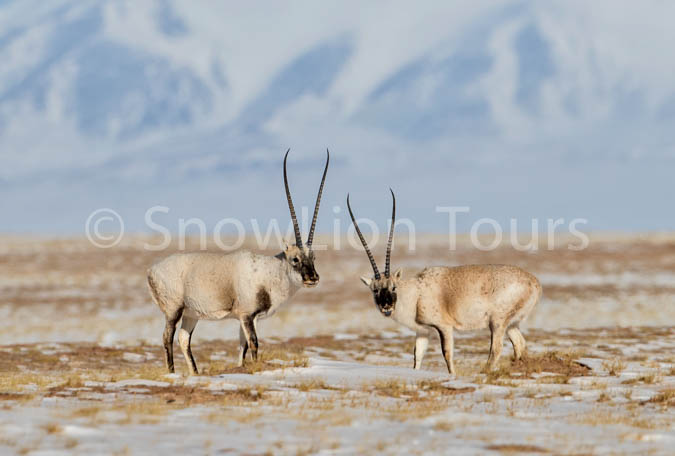Day 1: Arrive in Xining [2270m]
Arrive Xining by plane or train. Xining is the capital city of Qinghai Province in western China, traditionally belongs to Amdo Tibet. Our guide and driver will pick you up and transfer to your hotel. If time allows, visit Tibetan Medicine and Cultural Museum which is located in the north skirt of the Xining city. Tibet Medicine and Cultural Museum is the most authentic and by far the largest Tibetan museum and Tibet cultural learning center in the world. There are eight major exhibition halls on the second floor, including the Art of Thangka Painting Hall, Tibetan Medicine History Hall, Tibetan Medicine Thangka Hall, External Therapy Tools Hall, Tibetan Medicine Classical Literature Hall, Tibetan Medicine Specimen Hall, Tibetan Astrology/Astronomy Hall, Tibetan Cultural Hall, and Tibetan Calligraphy Hall. Besides these halls, the other highlight is the famous Tibetan Art painting or Thangka displayed on the second floor of the museum. When you exist the museum from First floor, there are some souvenir shops where you can check out some Tibetan carpets, Thangka and other souvenirs from Qinghai Province. The whole visiting takes minimum 2 hours. Afterwards, we will drive to your hotel.
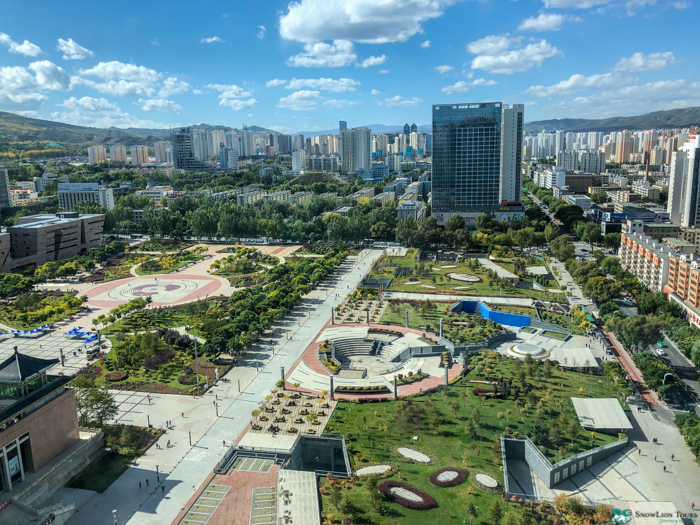
The view of Qinghai Provincial Museum from top
Day 2: Xining – Khamra(Kanbula) – Gui’de / Trika [2205m] 350km 6 hours
In the morning drive out to Trika via Khamra national park.and you will reach a forest and now you are already inside the Kanbula Park. Before continue drive up on the mountain, you have an option to visit a hidden nunnery by turning left down to the narrow valley, the nunnery called Achung Namdzong Nunnery which once became one of the most important meditation center in Amdo Tibet. It is surrounded by steep high red clay mountains which also called Danxia styel earth formation. Afterwards, continue drive up on the mountain to have a panoramic view of Kanbula Park, Danxia Red clay mountains and Artificial lake formed by Yellow River Hydropower Station. Then drive downwards to Trika and Trika is one of the lowest town in Qinghai Province in the northwest of China. It is also known as the most clean part of Yellow River. Yellow River is greener than Yellow in this part of stream. Visit Jokhang Temple in the morning, a small temple named after the the Buddha’s statue inside in main temple.
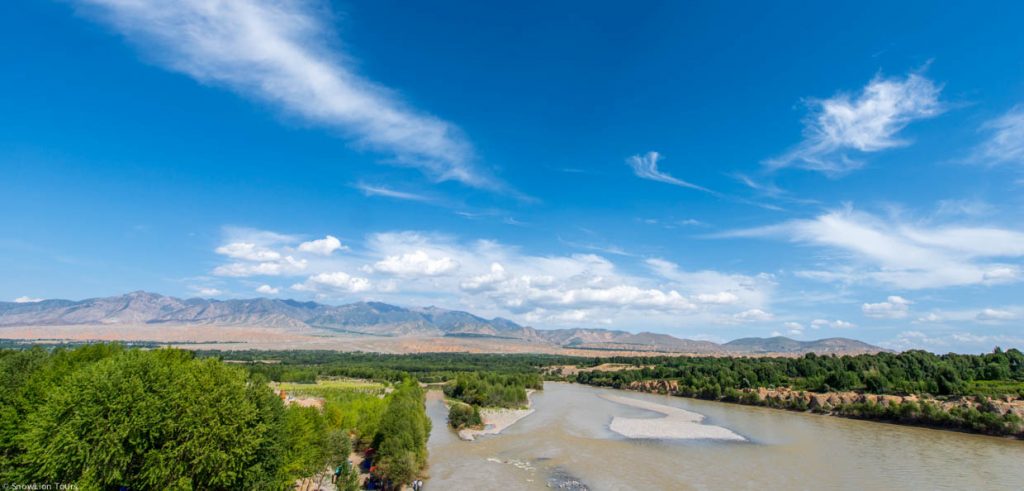
Yellow River, the mother river of Chinese Civilisation
Day 3: Gui’de – Machen [3700m] 340km 5-6 hours
Head out to Machen, the capital of Golok Tibetan Prefecture, the most rugged area in all of Amdo. Watch rolling green hills turn into snow mountains. Along the way, stop off at Ragya Monastery, a branch of Sera Monastery in Tibet Autonomous Region. Ragya is located at open red clay valley on the Yellow River side. There is a half hour circumambulation path around the monastery which you can go with local pilgrims. Stay overnight in Machen.
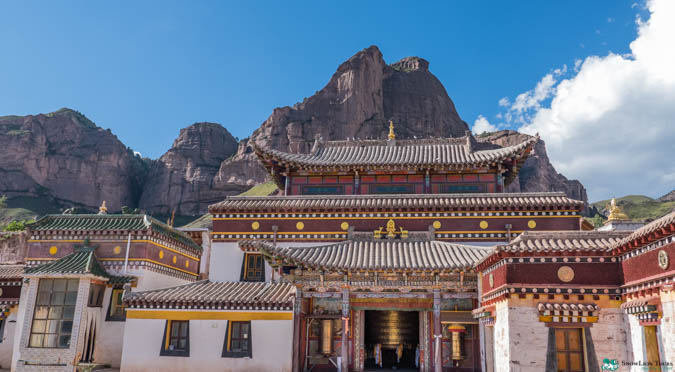
Ragya Monastery main gate.
Day 4: Machen – Mt Amnye Machen – Jyekundo [3710m] 410km 5-6hours
Drive to Jyekundo via Mt Amnye Machen. Mt. Amnyi Machen is one of the main holy mountains in Tibet, it is revered in both Tibetan Buddhism and Bon religion as the chief indigenous deity Machen Bora of Amdo Tibet. The existence of this huge mountain results in one of the great bends of yellow river. We will stop at bottom of this majestic snow mountain, walk to the Halong glacier or hike up to a mountain opposite it to have a panoramic view of Mount Amnye Machen. After arrive Jyekundo, visit Jyekundo Monastery. hike or drive up to Jyegu monastery, located on a hill behind the town. And it was a Bon monastery originally and later converted to Kagyu and now it is a Sakya monastery, the monastery was completely destroyed during the earth quake in 2010. now the reconstruction is almost done. Overnight in Jyekundo.
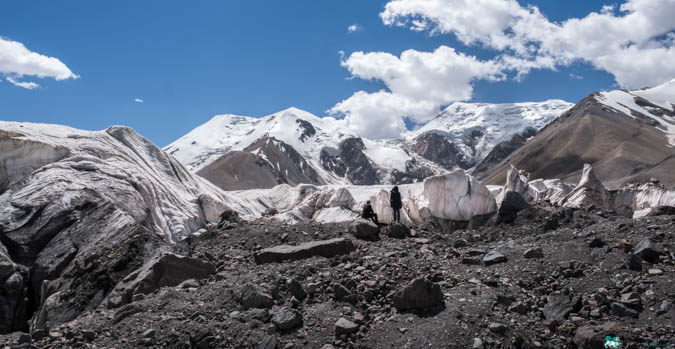
Halong Glacier and Mount Amnye Machen in Golok
Day 5: Jyekundo [3670m]
In the morning visit Nambar Nangzel or Wencheng Temple of Tragu monastery located 20km outside Jyekundo. The temple offers a Maha Varocaina Statue. According to the Buddhist interpretation, this statue has the equivalent blessing effects than the Buddha Sakyamuni Statue in Jokhang Temple in Lhasa. Afterwards drive back to town and visit Jyeku monastery on the hill top behind the town and Gyanak Mani Stones at the end of town. Jyeku monastery had been the site of an ancient Bon temple, before Kagyupa temples were built alongside it. Then when Dragon Phakpa passed through in the course of his travel in 1268. He consecrated the site for the construction of a Sakya tradition monastery. Today Jyeku Monastery consist with 16 temples and home to more than 500 monks. Then visit Gyana Mani Stone Pile which is the largest Mani Stone in the world, therefore, it received a Guinnes World Records. Mani stones feature carved and painted Tibetan Buddhist mantras. At the Mani Stone Pile, mountains of rocks are stacked upon each other, and carvers sell mani stones nearby if you’d like to contribute to the pile. Pilgrims come from all over to circumambulate the stones. Overnight in Yushu
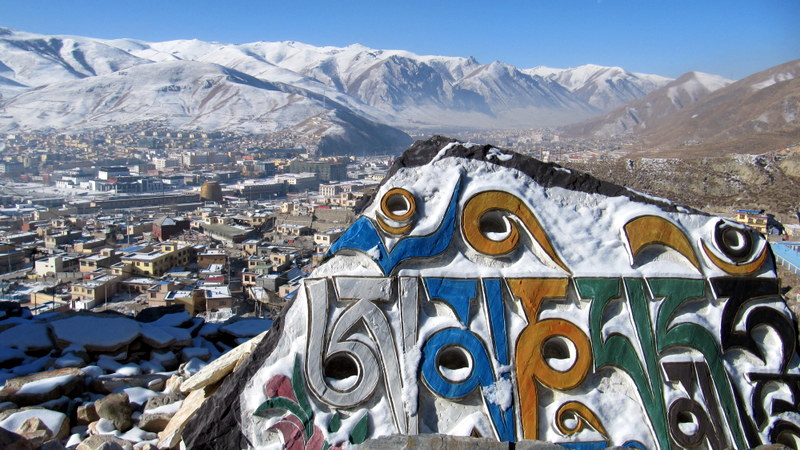
The overview of Jyegudo / Yushu
Day 6: Jyekundo – Gaden monastery – Surmang Monastery – Nangchen [3660m] 280km 6-7hours
In the morning drive to Nangchen via Gaden monastery and Surmang monastery. Gaden monastery is a Geluk monastery which is built on a hilly peninsula surrounded by the Dzi River. afterwards drive along the Dzi river and visit Surmang Namgyaltse. Surmang Namgyaltse Monastery belongs to the Karma Kagyu sect of Tibetan Buddhism. It was founded in the 15th century by a disciple of the 5th Karmapa. The word “Surmang” means “many cornered” and refers to an oddly shaped meditation hut (and perhaps more than one) that was originally built at the location. Overnight in Nangchen.
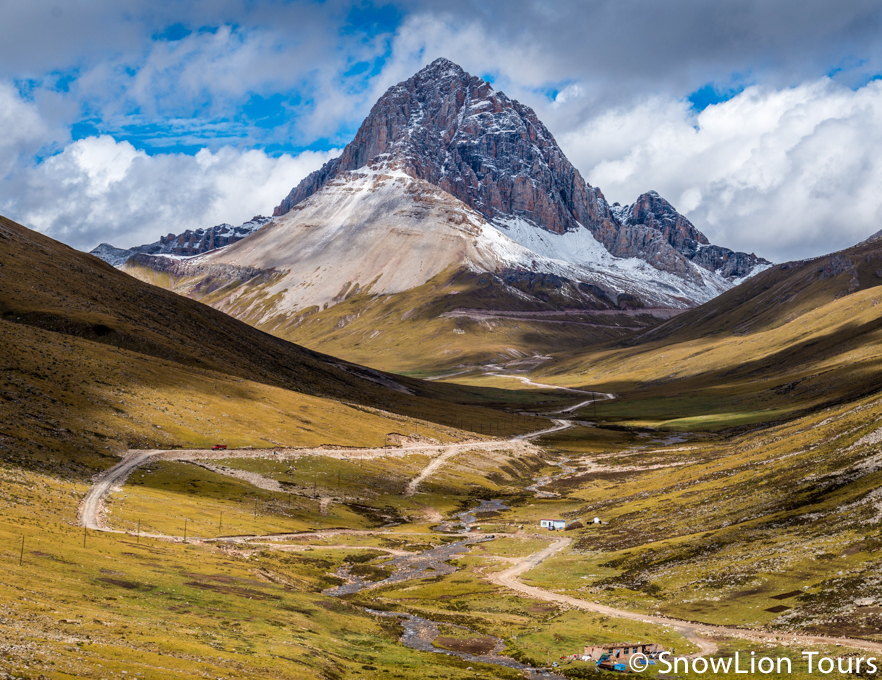
The landscape on the way to Nangchen from Yushu
Day 7: Nangchen [3660m]
A day trip to Gar monastery. Gar Monastery is set in one of the most beautiful locations of any monastery in Tibet. This Drigung Kagyu sect monastery was founded in the 18th century. It is located in the Dza River valley at an elevation of around 4000m. An evergreen forest surrounds the monastery while craggy mountain peaks can be seen all around. A small lake is also located in the valley below the monastery. The area around Gar Monastery provides excellent opportunities for hiking. In the afternoon, drive back to Nangchen for overnight.

beautiful located monastery in Nangchen
Day 8: Nangchen – Rongbo – Chumarlab 4100m [230km] 4 hours
Easy day drive back to Madoi via Gyodrag monastery and Jyekundo. Which is the second largest Kagyu monasteries in Nangchen. You can also enjoy the original Kagyu style of Architecture of the monastery in this place. You can stop for some short hikes along the way. Afterwards, drive to Madoi via Jyekundo. Madoi is the highest town in Qinghai province.
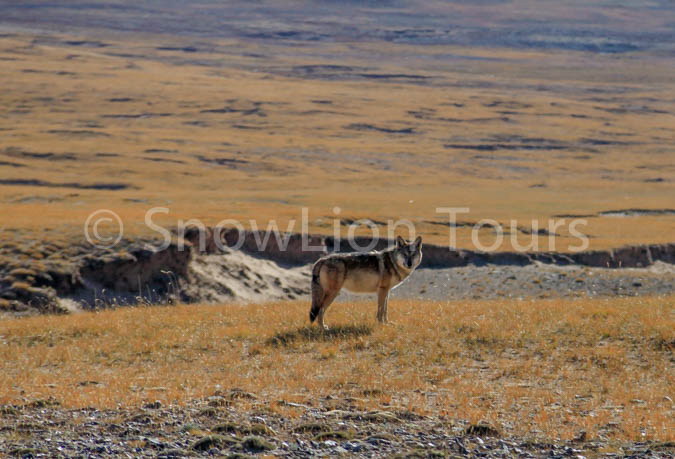
wolf between Zatoi and Qumalai
Drive to Chumarleb via Rongbo black necked crane natural reserve, Rongbo Wetland is also an important stopover site for migrating black-necked cranes bound for other breeding sites in Qinghai and perhaps Gansu Province. Rongbo black necked crane national reserve is one of the area where the cranes take breeding during the summer months on the Tibetan plateau.
Day 9: Chumarlab – Budongquan 3900m [315km] 7 hours
Drive to Budongquan through the three river’s source natural reserve. From Chumarlab you will probably encounter most of the wildlife of Tibetan plateau including Wild Yaks. Tibetan sand fox and wolfs are also find in in this area of Tibet. Wild yaks consists of treeless uplands between 3,000 and 5,500 m (9,800 and 18,000 ft). Tibetan antelopes also find here as they are migrating from northern TAR to this region in August every year.
Day 10: Budongquan – Wild Yak Valley – Golmud [2780m] 280km 5 hours
Drive to Wild yak valley near Yuzhu peak. Wild yak valley is an area where lot of wild yaks can be found early May or late september. Especially the near the Xiwangmu lake. Afterwards We will spend whole first half day looking for wild yaks and photograph this amazing creature in the valley. We will start heading back to Golmud in the late afternoon, spend the night in Golmud.
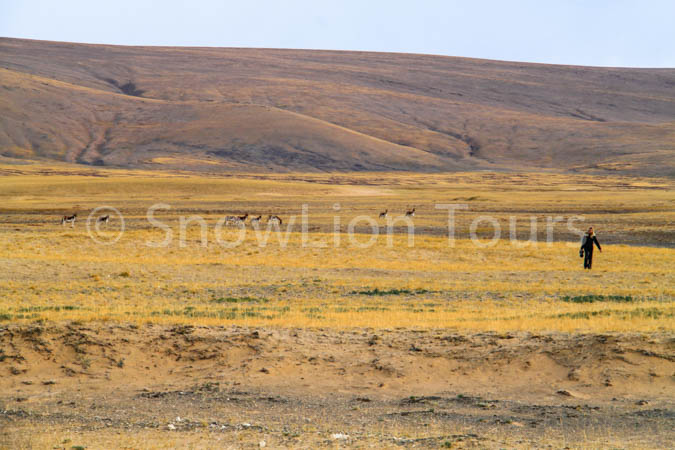
photographer is taking a phone of wildlife.
Day 11: Golmud – Panchen Zhinde – Chaka [2580m] 380km 6 hours
Head to Chaka via Panchen Zhingde. Where you can visit a temple which built for Panchen Lama. Afterwards drive to Chaka Salt Lake. Chaka Salt Lake, also name Tsaka Lake is located in Wulan County, Haixi Mongolian Tibetan Autonomous Prefecture in Qinghai province. Chaka is Tibetan Language, meanining “salt pond”. The Chaka Salt Lake is well known as the “the mirror of the sky”, mountain surrounded the lake, the white pure lake reflects the azure sky if the weather is brilliant. Only one part of the lake is open to tourists and the other part is still producing salt and Salt factory is still operational. Travelers also can take a small train inside the tourist zone to enjoy Tsaka Salt Lake landscape. If you prefer to walk, it takes about 30 mins to get to the central of the lake. The lake is shallow and white, it became one of the photography feature. Stay overnight at Chaka.
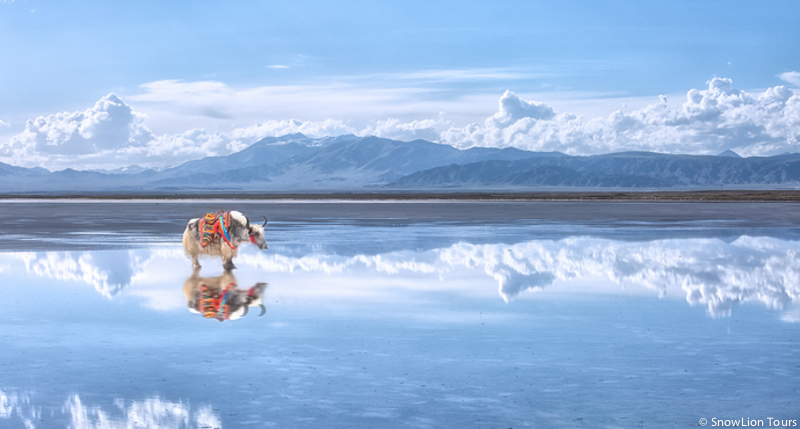
a white yak is in the salt Lake in Chaka.
Day 12: Chaka Salt Lake – Qinghai Lake – Xining [3100m] 360km 5-6 hours
Drive to Kokonor (Qinghai Lake or Tso Ngonpo) – the largest lake in China. It is also known as Tso Ngonpo in Tibetan and Qinghai lake in Chinese, which means “blue lake” in Tibetan, Chinese, and Mongolian languages. It is a holy lake for both Tibetans and Mongolians. Afterwards drive back to Xining.
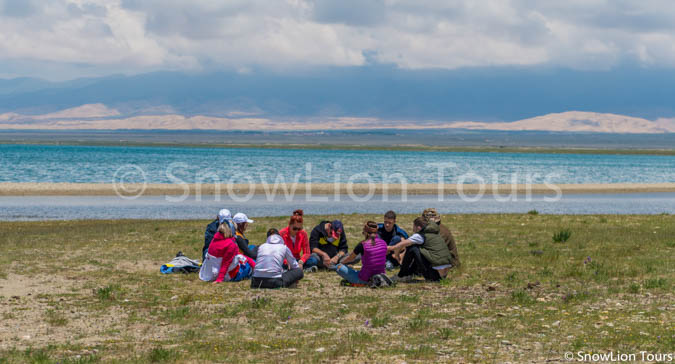
Our group is relaxing at the shore of Qinghai Lake
